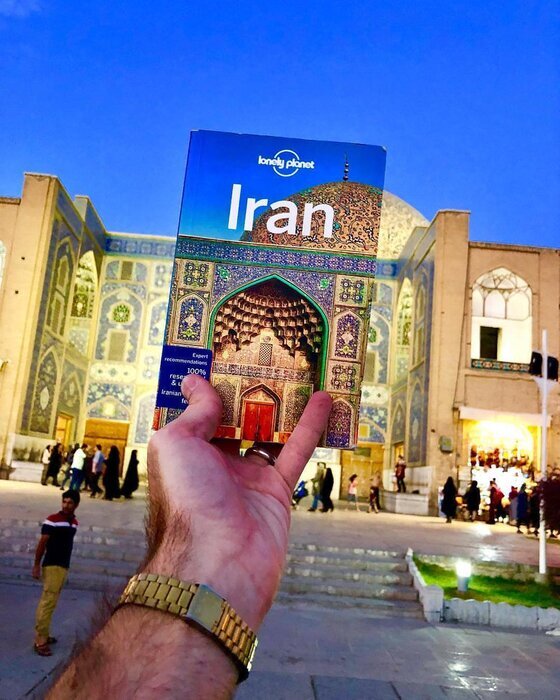Reissuance of Iran visas won’t cause a flood of tourists, expert says

TEHRAN – In a response to some complaints, Iranian Tour Operators Association Director Ebrahim Pourfaraj has said the reissuance of Iranian tourist visas won’t trigger a flood of visitors to the country.
“The start of issuing tourist visas after a hiatus of 19 months won’t mean that a flood of travelers would be arriving in Iran,” Pourfaraj said in a tourism webinar on Friday.
The Islamic Republic is set to resume tourist visas by next month after months of suspension amid strict government measures to prevent the spread of coronavirus, the tourism minister announced on September 27 concurrent with World Tourism Day.
“[Iranian] travel companies are due to start talks to foreign sides… so far these negotiations have not taken place, because we did not have a clear answer about the status of foreign tourist reception in Iran,” the expert explained.
Elsewhere in his remarks, Pourfaraj pointed to the mass vaccination of Iranian nationals against COVID-19, which has gained momentum across the country.
“In addition to visas, progress in mass vaccinations steadily enhance public health, and now we can talk about the health safety in the country,” he added.
Over the past couple of weeks, the number of people testing positive for COVID-19 has continued to fall in the Islamic Republic, curbing a stubborn fifth wave of the pandemic, which has seen daily mortalities of up to 700. As of October 1, the figure dropped to below 250 as the government has devoted a great deal of effort to vaccinate citizens against the nasty virus.
Furthermore, the expert reminded that Iran is one of the most wallet-friendly destinations in the world, adding: “While the economies of many countries are affected by the coronavirus, this inexpensiveness is an advantage.
However, months of steep recession has taken its toll. Many travel insiders, hoteliers, and tour operators have faced big dilemmas such as bankruptcy, unemployment, debts, and the prospects of not being competitive on the international level.
In November 2020, the World Tourism Organization announced that international tourist arrivals to Iran plunged 72% during the first eight months of 2020 when compared to 2019, highlighting the severe impact of COVID-19 as the main factor.
Over the past couple of months, Pourfaraj had frequently asked the government to issue tourist visas for the international applicants who have been fully vaccinated against COVID-19. “The Ministry of Health and the National Headquarters for Coronavirus Control can at least agree that the international tourists who have received the [second dose of] coronavirus vaccine would be allowed to enter Iran.”
Earlier this year, the expert lamented “the continuation of such a trend would result in losing international tourist markets more than before.”
According to Pourfaraj, reasonable prices of Iran tours are expected to bring back the boom into the tourism sector of the country in the post coronavirus era. “Attractive tour plans are also being prepared for those who are eager to explore the historical attractions and natural wonders of the ancient country and want to experience a vacation here.”
He also expressed hope that international tour operators and companies who have worked with their Iranian counterparts for years, would put Iran back on the world’s travel route again, considering the facilities they can get at cheaper prices than in other countries.
Referring to health tourism as a popular branch in Iran, he believes that medical services in Iran are provided at a lower price than what may be offered at double the price in other countries.
Back in January, he announced that the tourist flow from across the world to Iran will return to normal in 2022. Although there are requests for traveling to Iran in the current year (2021), most travel agencies and tour operators believe that the flow will go back to normal in the next year, he explained. “Beginning mass vaccination against the coronavirus will provide better and safe conditions for international travels in 2022.”
Some experts believe Iran is still somehow “unknown” for many potential travelers due to Western “media war”. Several estimates have been released so far on the extent of the tourism-related losses incurred by the pandemic. Only months into the outbreak, former tourism minister Ali Asghar Mounesan, lamented that the number of foreign travelers to Iran was drastically plunged due to the pandemic.
“Tourism of the country was growing before the corona [outbreak], its revenues reached $11.7 billion in 2019, which accounted for 2.8% of GDP, nearing the average share of tourism in the world GDP, which was 3.2 percent,” Mounesan said. He added 8.7 million foreign nationals visited Iran during the [Iranian] year (1398), adding that Iran was ranked as the second fastest-growing country in tourism based on data compiled by the World Tourism Organization.
Iran is potentially a booming destination for travelers seeking cultural attractions, breathtaking sceneries, and numerous UNESCO-registered sites. Under the 2025 Tourism Vision Plan, Iran aims to increase the number of tourist arrivals from 4.8 million in 2014 to 20 million in 2025.
Even before the pandemic, Iran’s tourism was already grappling with some challenges, on top of those Western “media propaganda” aimed at scaring potential travelers away from the Islamic Republic. Some experts believe Iran is still somehow “unknown” for many potential travelers due to such a “media war”. They, however, consider bright prospects for the tourism sector of the country if it vigorously pursues comprehensive strategies to counter U.S.-led propaganda and strict sanctions, yet does its best to loosen tough travel regulations.
The ancient land embraces hundreds of historical sites such as bazaars, museums, mosques, bridges, bathhouses, madrasas, mausoleums, churches, towers, and mansions, of which 26 being inscribed on the UNESCO World Heritage list.
AFM
